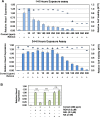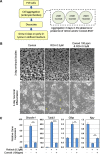Corexit-EC9527A Disrupts Retinol Signaling and Neuronal Differentiation in P19 Embryonal Pluripotent Cells
- PMID: 27684493
- PMCID: PMC5042420
- DOI: 10.1371/journal.pone.0163724
Corexit-EC9527A Disrupts Retinol Signaling and Neuronal Differentiation in P19 Embryonal Pluripotent Cells
Abstract
Corexit-EC9500A and Corexit-EC9527A are two chemical dispersants that have been used to remediate the impact of the 2010 Deepwater Horizon oil spill. Both dispersants are composed primarily of organic solvents and surfactants and act by emulsifying the crude oil to facilitate biodegradation. The potential adverse effect of the Corexit chemicals on mammalian embryonic development remains largely unknown. Retinol (vitamin A) signaling, mediated by all-trans retinoic acid (RA), is essential for neural tube formation and the development of many organs in the embryo. The physiological levels of RA in cells and tissues are maintained by the retinol signaling pathway (RSP), which controls the biosynthesis of RA from dietary retinol and the catabolism of RA to polar metabolites for removal. RA is a potent activating ligand for the RAR/RXR nuclear receptors. Through RA and the receptors, the RSP modulates the expression of many developmental genes; interference with the RSP is potentially teratogenic. In this study the mouse P19 embryonal pluripotent cell, which contains a functional RSP, was used to evaluate the effects of the Corexit dispersants on retinol signaling and associated neuronal differentiation. The results showed that Corexit-EC9500A was more cytotoxic than Corexit-EC9527A to P19 cells. At non-cytotoxic doses, Corexit-EC9527A inhibited retinol-induced expression of the Hoxa1 gene, which encodes a transcription factor for the regulation of body patterning in the embryo. Such inhibition was seen in the retinol- and retinal- induced, but not RA-induced, Hoxa1 up-regulation, indicating that the Corexit chemicals primarily inhibit RA biosynthesis from retinal. In addition, Corexit-EC9527A suppressed retinol-induced P19 cell differentiation into neuronal cells, indicating potential neurotoxic effect of the chemicals under the tested conditions. The surfactant ingredient, dioctyl sodium sulfosuccinate (DOSS), may be a major contributor to the observed effect of Corexit-EC9527A in the cell.
Conflict of interest statement
The authors have declared that no competing interests exist.
Figures





References
-
- EPA. Alphabetical List of NCP Product Schedule (Products Available for Use During an Oil Spill) https://www.epa.gov/emergency-response/alphabetical-list-ncp-product-sch.... 2016.
-
- US Coast Guard Final Action Memorandum-Incident Specific Preparedness Review (ISPR) Deepwater Horizon Oil Spill. Final Report, Washington DC. 2011.
LinkOut - more resources
Full Text Sources
Other Literature Sources
Research Materials

